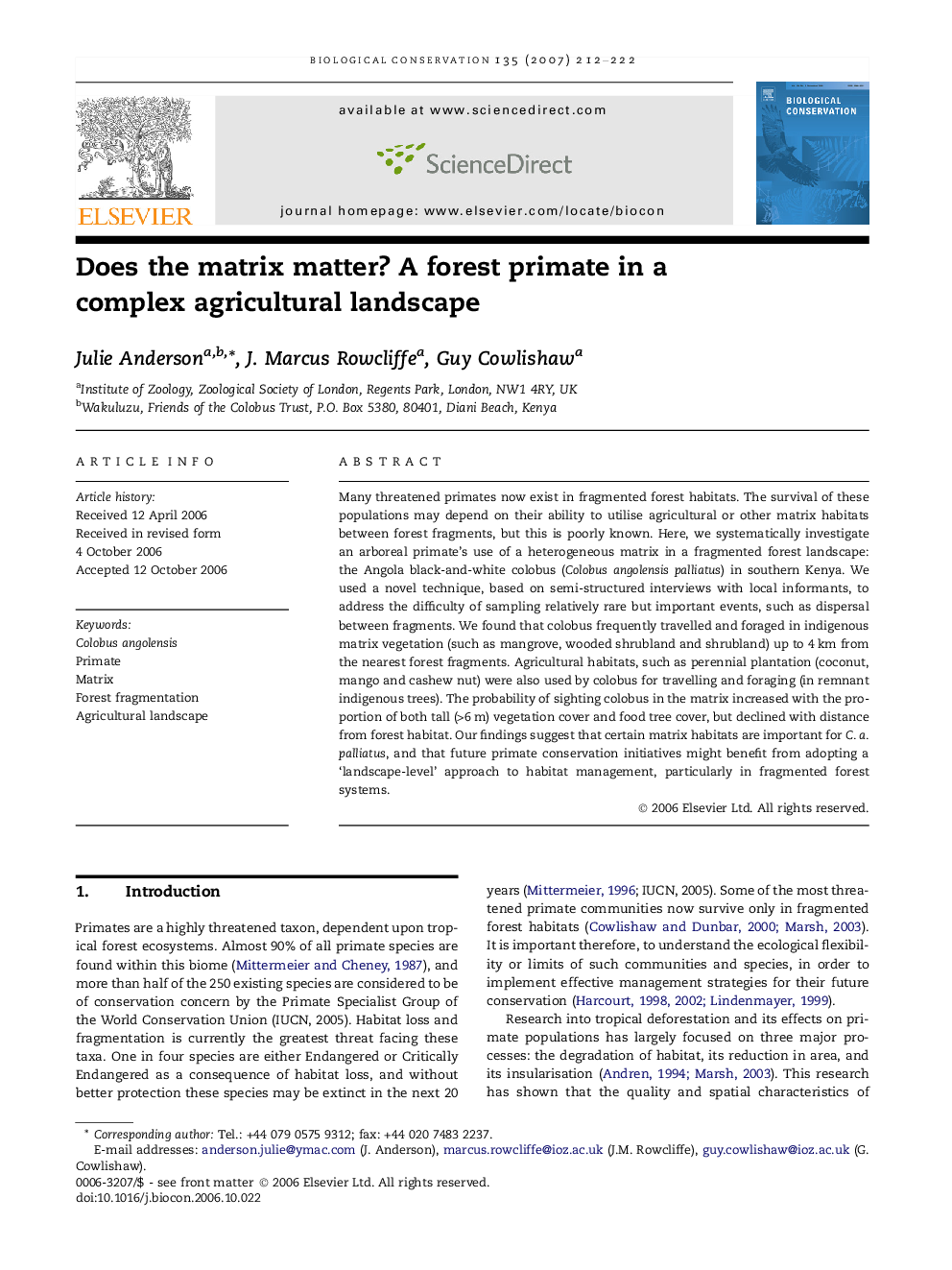| Article ID | Journal | Published Year | Pages | File Type |
|---|---|---|---|---|
| 4387297 | Biological Conservation | 2007 | 11 Pages |
Many threatened primates now exist in fragmented forest habitats. The survival of these populations may depend on their ability to utilise agricultural or other matrix habitats between forest fragments, but this is poorly known. Here, we systematically investigate an arboreal primate’s use of a heterogeneous matrix in a fragmented forest landscape: the Angola black-and-white colobus (Colobus angolensis palliatus) in southern Kenya. We used a novel technique, based on semi-structured interviews with local informants, to address the difficulty of sampling relatively rare but important events, such as dispersal between fragments. We found that colobus frequently travelled and foraged in indigenous matrix vegetation (such as mangrove, wooded shrubland and shrubland) up to 4 km from the nearest forest fragments. Agricultural habitats, such as perennial plantation (coconut, mango and cashew nut) were also used by colobus for travelling and foraging (in remnant indigenous trees). The probability of sighting colobus in the matrix increased with the proportion of both tall (>6 m) vegetation cover and food tree cover, but declined with distance from forest habitat. Our findings suggest that certain matrix habitats are important for C. a. palliatus, and that future primate conservation initiatives might benefit from adopting a ‘landscape-level’ approach to habitat management, particularly in fragmented forest systems.
